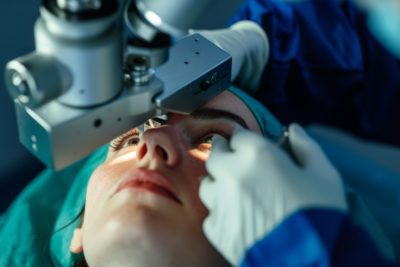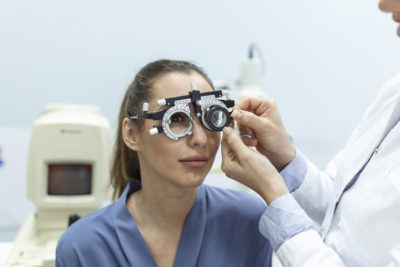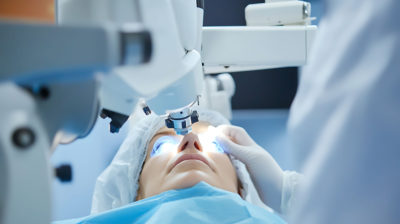Computer use after Lasik
The recovery period of any eye surgery is important. It is critical that eyes don’t get strained or dry during this recovery period. In most cases use of digital devices is restricted for 24 hours after Lasik. Thereafter most people are advised to slowly increase the duration of computer usage over the first 2-3 weeks. This restriction applies to other screens as well.
Digital devices like computers, tablets and mobile phones have become an integral part of our lives. Right from doing our work, reading news, watching our favourite shows and chatting with people, computers have pervaded every part of our life. Some of us spend more than 40 hours a week on these devices. So, naturally most people are worried and want to know how soon they can get back to the normal usage of computers and other devices. I think before answering this question it is very important to understand the effect that these devices have on our eyes in general.
How Computers Affect the Eyes
- Prolonged computer use can lead to eye strain, dryness, and discomfort, even for those who haven’t undergone LASIK surgery.
- Staring at a screen reduces blinking frequency, exacerbating dryness and irritation.
- The blue light emitted from screens may disrupt the natural tear film and increase the risk of digital eye strain.
How Computers Affect the Healing Process of the Eye After LASIK Surgery
- LASIK surgery temporarily weakens the corneal surface, making the eyes more sensitive to strain and dryness.
- Excessive screen time can slow down the recovery process by contributing to dryness and irritation.
- It may also cause discomfort or fluctuations in vision during the initial healing phase.
- Extended computer use without breaks may lead to headaches and difficulty focusing, impeding optimal recovery.
Tips for Using Computer After LASIK Surgery
1. Use of Artificial Tears:
- LASIK can temporarily reduce tear production, so keeping the eyes moist is essential.
- Use doctor-recommended artificial tears regularly to combat dryness during screen use.
2. Blink Regularly:
- Intentionally blinking while using a computer helps maintain a healthy tear film.
- Frequent blinking prevents dryness and irritation caused by staring at the screen.
3. Follow the 20-20-20 Rule:
- Every 20 minutes, look at an object 20 feet away for 20 seconds.
- This reduces eye strain and gives the eyes a chance to relax during extended screen use.
4. Maintain a Safe Distance:
- Keep the computer screen at least 20–26 inches from your eyes.
- Adjust the screen height so that the top of the screen is at or slightly below eye level.
5. Ensure Proper Computer Posture:
- Sit with your back straight and shoulders relaxed.
- Keep your feet flat on the floor and wrists aligned with the keyboard.
6. Create a Comfortable Work Station:
- Use an anti-glare screen to reduce reflections and blue light exposure.
- Ensure adequate lighting in your workspace to avoid screen glare.
- Adjust screen brightness to a comfortable level, matching ambient lighting.









